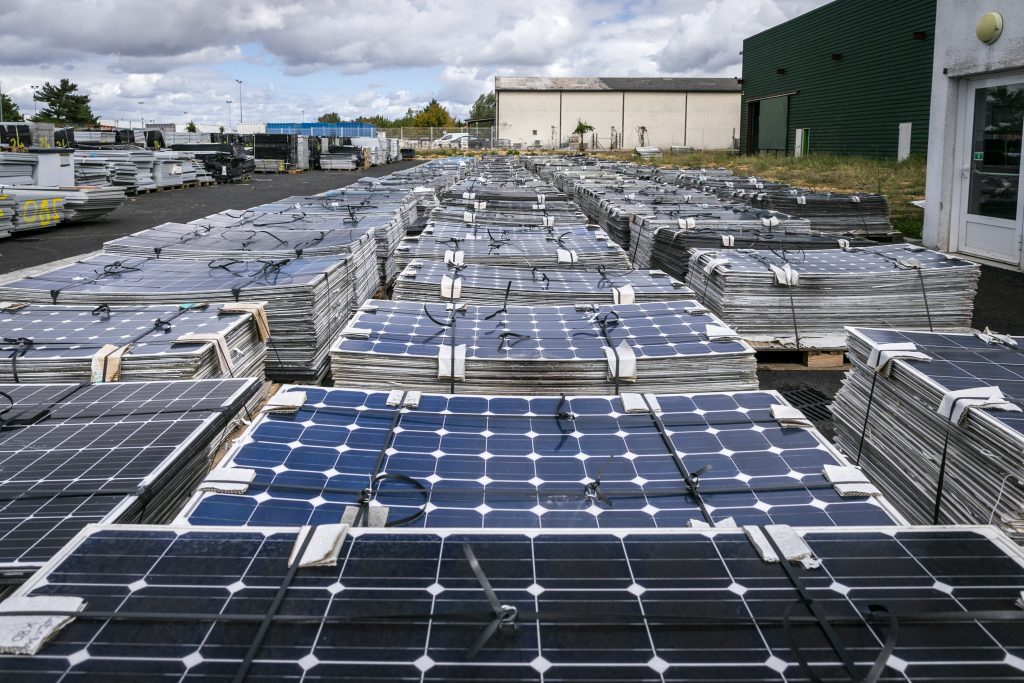Soren
Recyclage panneaux solaire
St Loubes
09/09/2022
UNSW Sydney
A new report on solar panel recycling has recommended a raft of measures including the establishment of large waste facilities in five big Australian cities by 2027.
The ‘Scoping study: Solar Panel End-of-Life Management in Australia’ report from the Australian Centre of Advanced Photovoltaics (ACAP) which is led by UNSW Sydney, highlights projected cumulative volume of decommissioned panels to reach 1 million tonnes by 2035.
On an annual basis, that could be as much as 100,000 tonnes of photovoltaic (PV) waste being generated every year by the end of the decade.
The study, commissioned by Neoen Australia, the country’s largest renewable energy company, reveals the problem is more pressing than previously thought, and contradicts earlier findings that significant volumes of waste would not appear until at least after 2030.
Initially, the majority of waste solar panels are expected to concentrate in Sydney, Melbourne, Brisbane, Perth, and Adelaide – before PV waste starts growing faster in regional and remote areas from 2030 onwards.
The first wave of increased waste is expected to come from decommissioned rooftop solar panels and the report says near-term action is needed to boost the levels of recycling and prevent this waste going into landfill.
Resource recovery
The authors have called for sites in the five major cities to deal with 5,000 to 10,000 tonnes of waste panels per year, with that volume needing to double at each facility in the next six years.
Those metropolitan facilities are predicted to be able to manage over 70 per cent of Australia’s solar panel waste, with additional smaller sites in Dubbo/Wellington, Townsville, Newcastle, Murrumbidgee, Central Highlands and Busselton providing a comprehensive nation-wide service.
Professor Renate Egan, Executive Director of ACAP, says: “The total material value from end-of-life solar panels is projected to surpass $1 billion by 2035.
“As a result, establishing domestic PV waste management facilities in Australia presents an opportunity for resource recovery. Recycling offers a gateway to reducing landfill, enhancing circular economy initiative, and job creation.
“This report was developed to provide a detailed analysis of the waste volumes and distributions, needed to prepare for future waste from rooftop and large scale solar.”
Dr Rong Deng, one of the authors of the report, highlights the economic value in building capacity in facilities that are able to properly recycle panels that come to the end of their useful life.
“Solar panels are made of materials like aluminium, glass, silicon, silver, and copper, and they can be recycled. Therefore, panels should be viewed as valuable resources rather than waste. However, more scalable, comprehensive, and cost-effective solutions are needed to deal with large volumes in the coming decade.
“More than 80 per cent of the decommissioned solar panels by 2030 are projected to emanate from small-scale distributed PV systems, attributable to the earlier evolution of Australia’s residential PV market,” she adds.
“In the next 12 years, we need a clearly defined management framework, accessible collection methods, and new technologies to transform the challenge of end-of-life solar panels into sustainable business opportunities with positive economic, environmental and social outcomes.”
The ACAP report advises that the new facilities should be dedicated to full material recovery, focusing exclusively on recycling solar panels through comprehensive processes designed specifically for the purpose, with the aim of achieving higher recycling rates and revenue.
The cost of recycling solar panels currently ranges from $500 and $1,000 per ton, covering transportation and before accounting for the revenue from sold materials. This estimate assumes that the recycling facilities handle approximately 5,000 tonnes of panels each year.
The major expenses in the recycling process are the capital expenditures required for facility setup and the ongoing labour costs.
The recycling sector faces significant challenges. The first is finding markets for recycled solar panel materials, especially glass which make up 70 per cent of the panel weight.
Currently they are mainly used as a sand substitute in construction materials because Australia does not have solar manufacturing industry that would make use of the recycled glass.
Innovation required
There is also a lack of specialised recovery solutions for the solar panel laminate. Given these challenges, alongside the high costs of recycling and a limited market for the recycled materials, the report highlights the pressing need for more innovative recycling solutions in Australia.
It says future solution should aim to efficiently reclaim all materials from solar panels at lower costs, addressing the existing gaps in the process.
The study was commissioned by Neoen Australia, as part of its long term commitment to delivering renewable energy to the ACT Government, with the intention of contributing to knowledge sharing across government, and the renewable energy and waste industries.
Shane Rattenbury, ACT Minister for Water, Energy and Emissions Reduction, said: “I am pleased to see this study published as an outcome of the ACT’s reverse auctions process. These auctions not only secured the Territory’s 100 percent renewable electricity supply, but also provided ongoing benefits for the local renewable energy industry and the ACT community by supporting research and innovation.
“As we work towards our target of net zero emissions by 2045, the ACT is committed to supporting energy innovation, including advancements in repurposing and recycling materials such as solar panels once they reach end of life.”
Louis de Sambucy, CEO of Neoen Australia, added: “I would like to thank the team at UNSW’s Australian Centre for Advanced Photovoltaics for their excellent work on this study, as well as our partners in the ACT Government and within the waste industry.
“As a long-term owner and operator of 1.4 GW of solar assets in Australia, Neoen is proud to be supporting initiatives that can advance the recycling solutions of the future.”
ACAP, led by UNSW, is funded by the Australian Renewable Energy Agency (ARENA) and has partnerships with ANU, CSIRO, University of Melbourne, Monash University, University of Queensland and University of Sydney.
Key facts:
Australian Centre of Advanced Photovoltaics has called for large waste facilities in major cities as photovoltaic waste predicted to reach 100,000 tonnes annually by 2030.
Plants, seeds & more delivered to your door!
www.nativeshop.com.au
Advertisement




